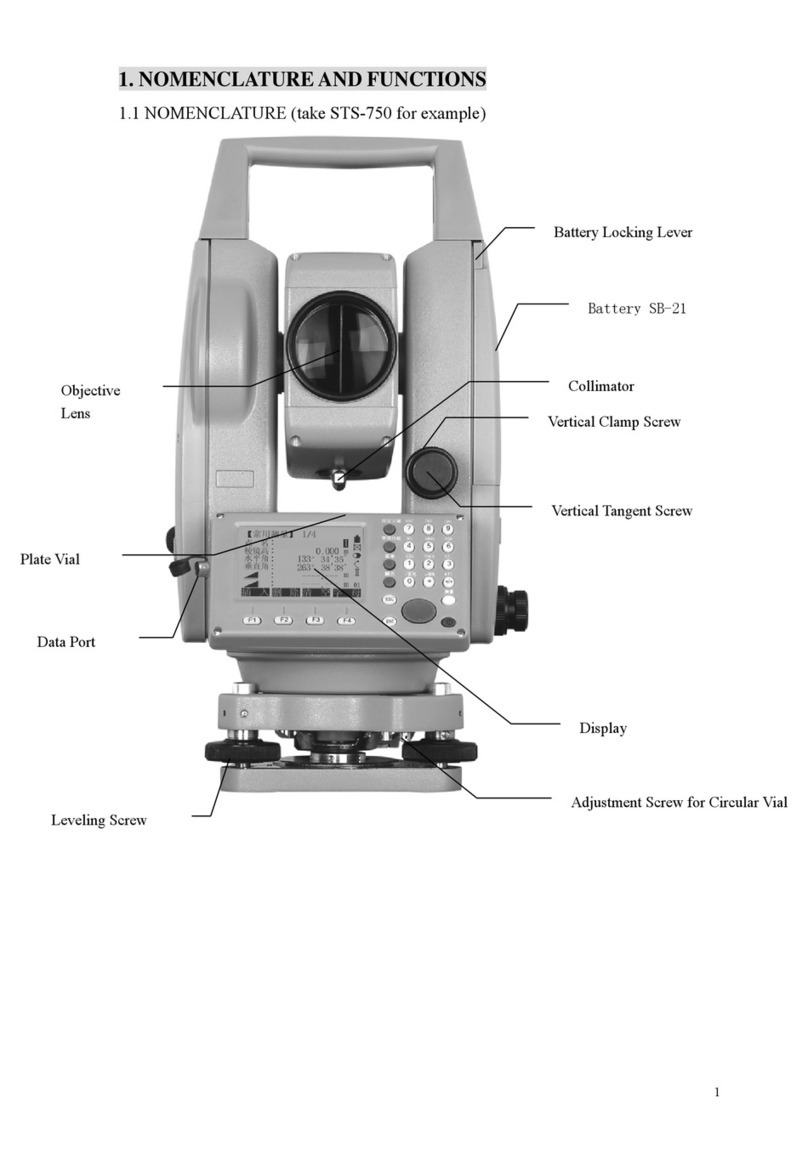
6
Warning:
Continuously looking straight at the laser beam is harmful.
Prevention:
Do not stare at the laser beam, or point the laser beam to others’ eyes. Reflected
laser beam is a valid measurement to the instrument.
Warning:
When the laser beam emits on prism, mirror, metal surface, window, etc., it is
dangerous to look straight at the reflex.
Prevention:
Do not stare at the object which reflects the laser beam. When the laser is switched
on (under EDM mode), do not look at it on the optical path or near the prism. It is only
allowed to observe the prism with the telescope of the total station.
Warning:
Improper operation on laser instrument of Class 3R will bring dangers.
Prevention:
To avoid to be harmed, each user is required to take safety precautions, and take
everything under control within the distance that would incur dangers (according to
IEC60825-1:2001).
The following shows the explanation related to the key sections of the
Standard.
Laser instrument of Class 3R is applicable outdoors and in construction field
(measurement, defining lines, leveling).
a) Only specialists who are trained related course and authenticated are allowed to
install, adjust, and operate this kind of laser instrument.
b) Stand related warning symbols in the scale of use.
c) Prevent any person to look straight at or use optical instrument to observe the
laser beam.
d) To prevent the harm caused by laser, block the laser beam at the end of the
working route. When the laser beam exceeds the limit area (harmful distance*) and
when there are motivating persons, stopping the laser beam is a must.
e) The optical path of the laser should be set higher or lower than the line of sight.
f) When the instrument is not in use, take care of it properly. The person who is not
authenticated is not allowed to use.
g) Prevent the laser beam from irradiating plane mirror, metal surface, window, etc.,
especially beware of the surface of plane mirror and concave mirror.
* Harmful distance means the maximum distance between the start point and the point which the laser is
weakened to a degree that isn’t harmful.
The internal EDM instrument equipped with a Class 3R/III a Laser has a harmful distance of 1000m
(3300ft). Beyond this distance, the laser intensity is weakened to Class I (Looking straight at the laser
beam causes no harm to the eyes.)




























